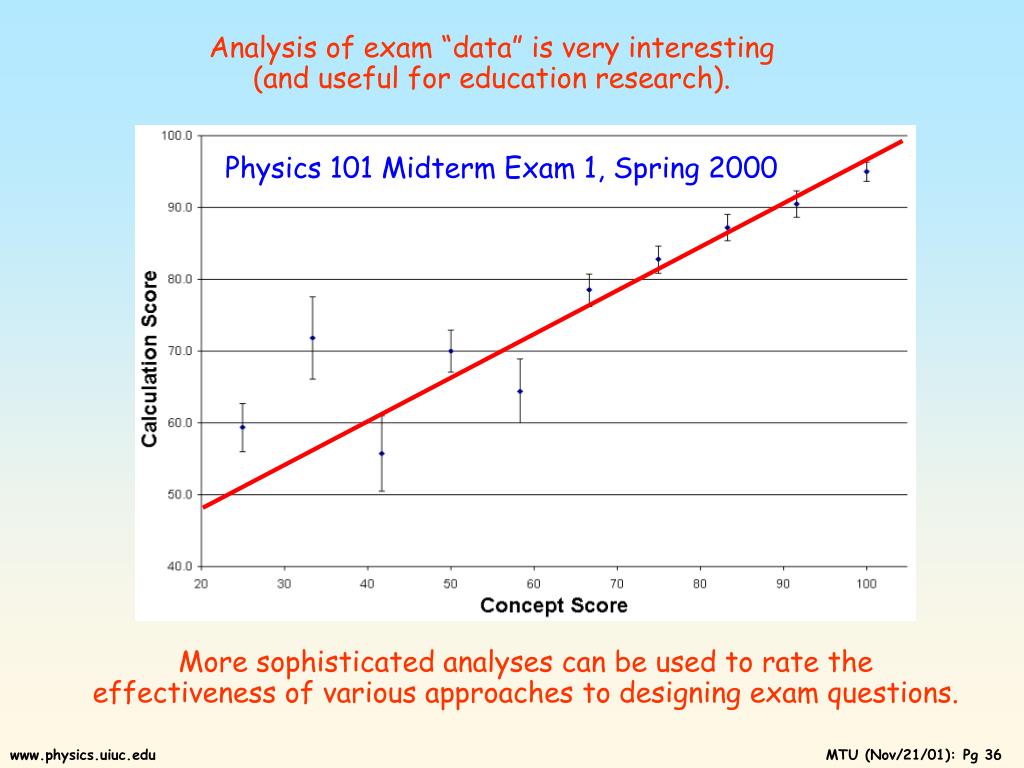
Physics 101 Physics 102 How Well Do Students Do on their First Response to M/C Questions? Physics 102 Physics 101 How Much Time Do Students Spend on IEs? How well do the students do on their first response to M/C questions?.How much time do students spend on the IEs?.These can be investigated by analyzing the student logs:.How “engaged” are students by the IE’s ?.For example, some questions we might ask ourselves are:.These data are very useful for education research: We record all student submissions on IEs: (the conversation).A Recap is given (Conceptual, Strategic and Quantitative Analyses).Once base question is answered correctly:.Eventually, enough help is given to solve the problem.Students can opt to answer the base question at any time.Questions that must be answered correctly to get more help.Questions for which more help is always available.
 Students can request help which comes in the form of more questions. Base question is a quantitative problem (multi-step). Once they get right the answer They get arecap And somefollow-upquestions Problems can be 4-5 levels deep - Eventually they get enough info to solve the problem. …these steps are designed toteach students problem solvingapproaches as well as physics…Įventually they get another (simpler) numeric question whoseanswer is needed to solve the primary numeric question.Ĭlicking on “Help” again results in asimilar dialogue as the first time,although one level “deeper”. …”Help” results in a discussion followed by some multiple-choice questions that lead them toward the answer… Interactive Examples (Socratic Dialogue) Start by asking a numeric question(usually multi-step) when students click in “Help”… Physics 101 Midterm Exam 1, Spring 2000 Why we should stress concepts: On this exam, the conceptual problems were worth about 30% of the total. Interactive Examples (work by Gary Gladding) !. Create web-based instructional materials that will promote “concept-based” problem solving among our introductory students. When given a qualitative question, most students will never consider writing down an appropriate equation… math is NOT seen as a TOOL. When given a quantitative question, most students will NOT think about the CONCEPTS that are involved. Too many students see “concepts” and “calculations” as two totally separate and unrelated activities. When given a quantitative physics problem, most students immediately resort to an “equation manipulation” strategy to solve the problem. Interactive Examples Can Students Learn Concept-Based Problem Solving on the Web? Check it out at: Mats Selen JCottrell Scholars Meeting
Students can request help which comes in the form of more questions. Base question is a quantitative problem (multi-step). Once they get right the answer They get arecap And somefollow-upquestions Problems can be 4-5 levels deep - Eventually they get enough info to solve the problem. …these steps are designed toteach students problem solvingapproaches as well as physics…Įventually they get another (simpler) numeric question whoseanswer is needed to solve the primary numeric question.Ĭlicking on “Help” again results in asimilar dialogue as the first time,although one level “deeper”. …”Help” results in a discussion followed by some multiple-choice questions that lead them toward the answer… Interactive Examples (Socratic Dialogue) Start by asking a numeric question(usually multi-step) when students click in “Help”… Physics 101 Midterm Exam 1, Spring 2000 Why we should stress concepts: On this exam, the conceptual problems were worth about 30% of the total. Interactive Examples (work by Gary Gladding) !. Create web-based instructional materials that will promote “concept-based” problem solving among our introductory students. When given a qualitative question, most students will never consider writing down an appropriate equation… math is NOT seen as a TOOL. When given a quantitative question, most students will NOT think about the CONCEPTS that are involved. Too many students see “concepts” and “calculations” as two totally separate and unrelated activities. When given a quantitative physics problem, most students immediately resort to an “equation manipulation” strategy to solve the problem. Interactive Examples Can Students Learn Concept-Based Problem Solving on the Web? Check it out at: Mats Selen JCottrell Scholars Meeting





 0 kommentar(er)
0 kommentar(er)
